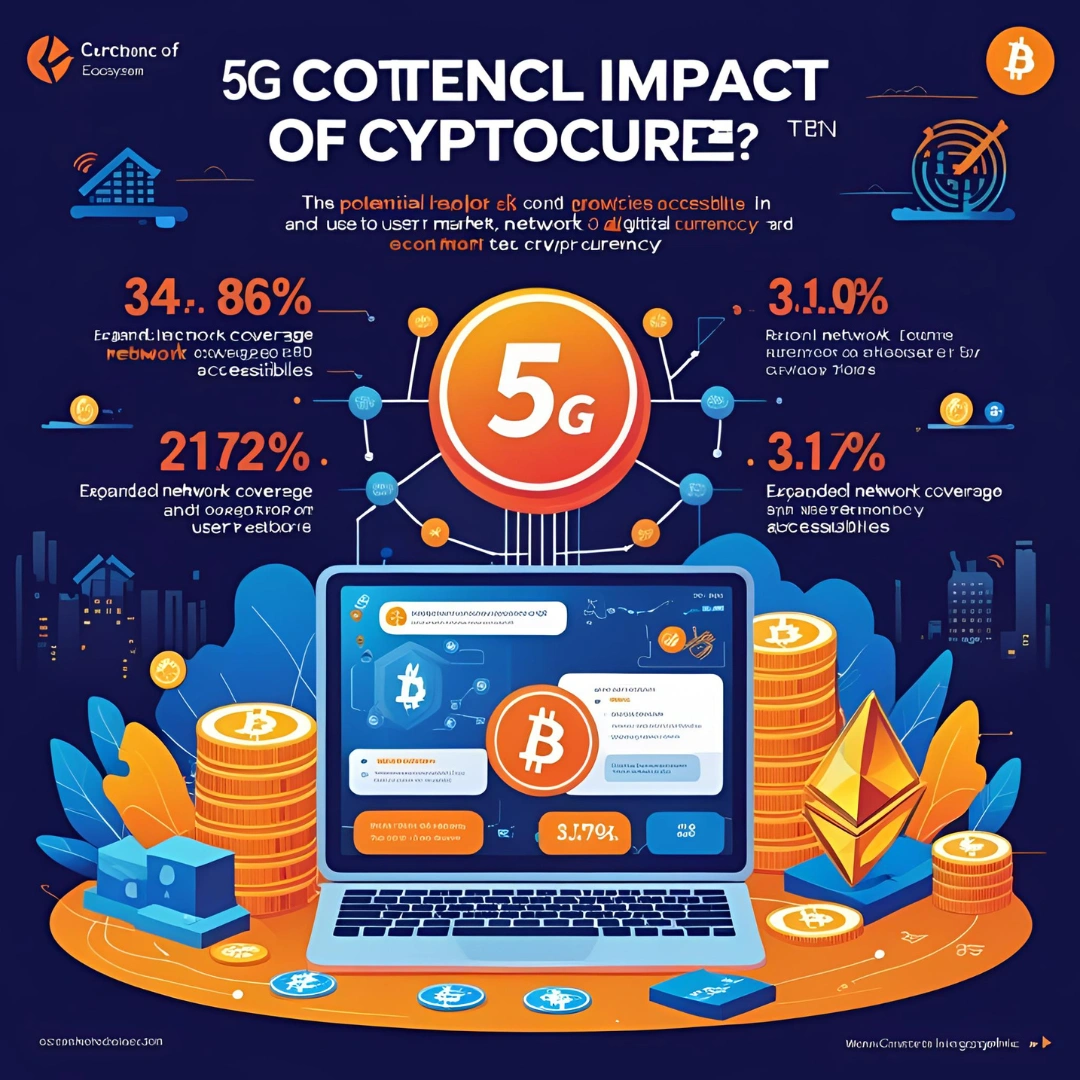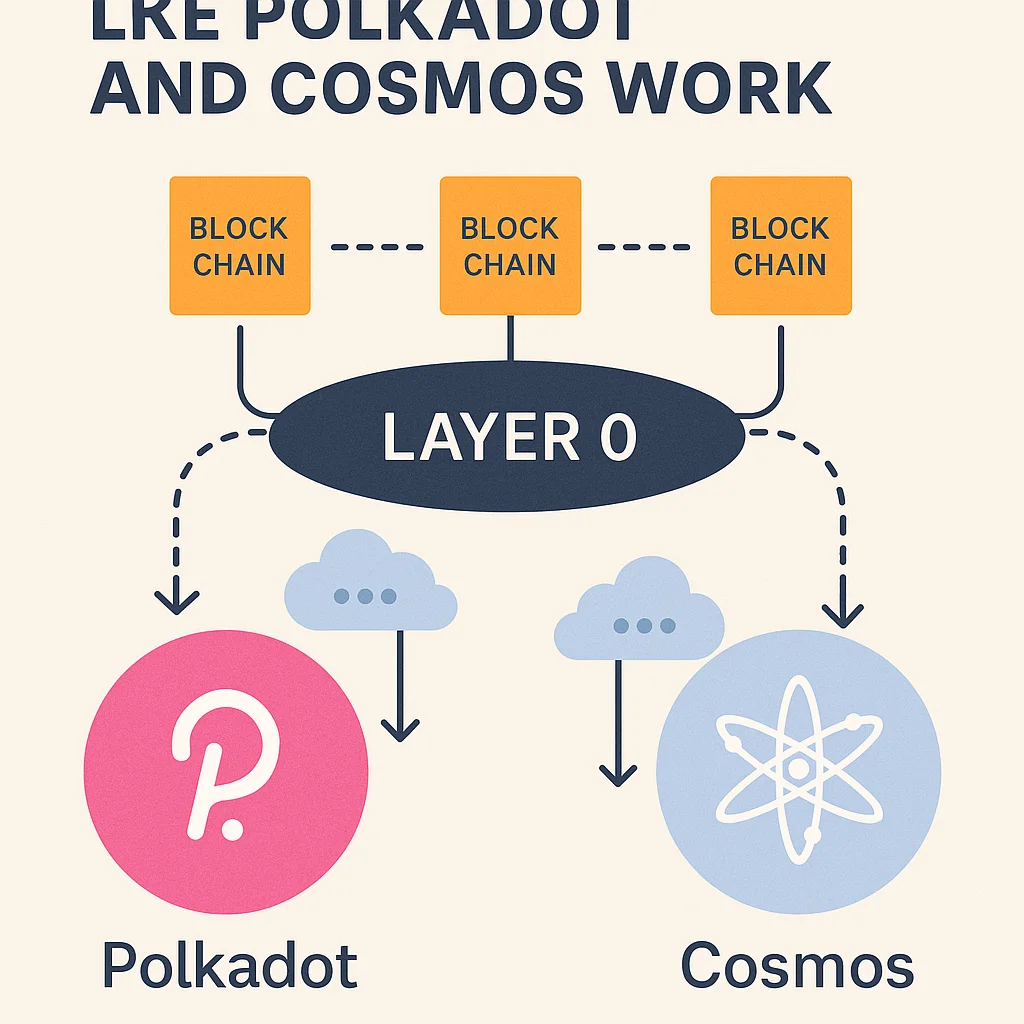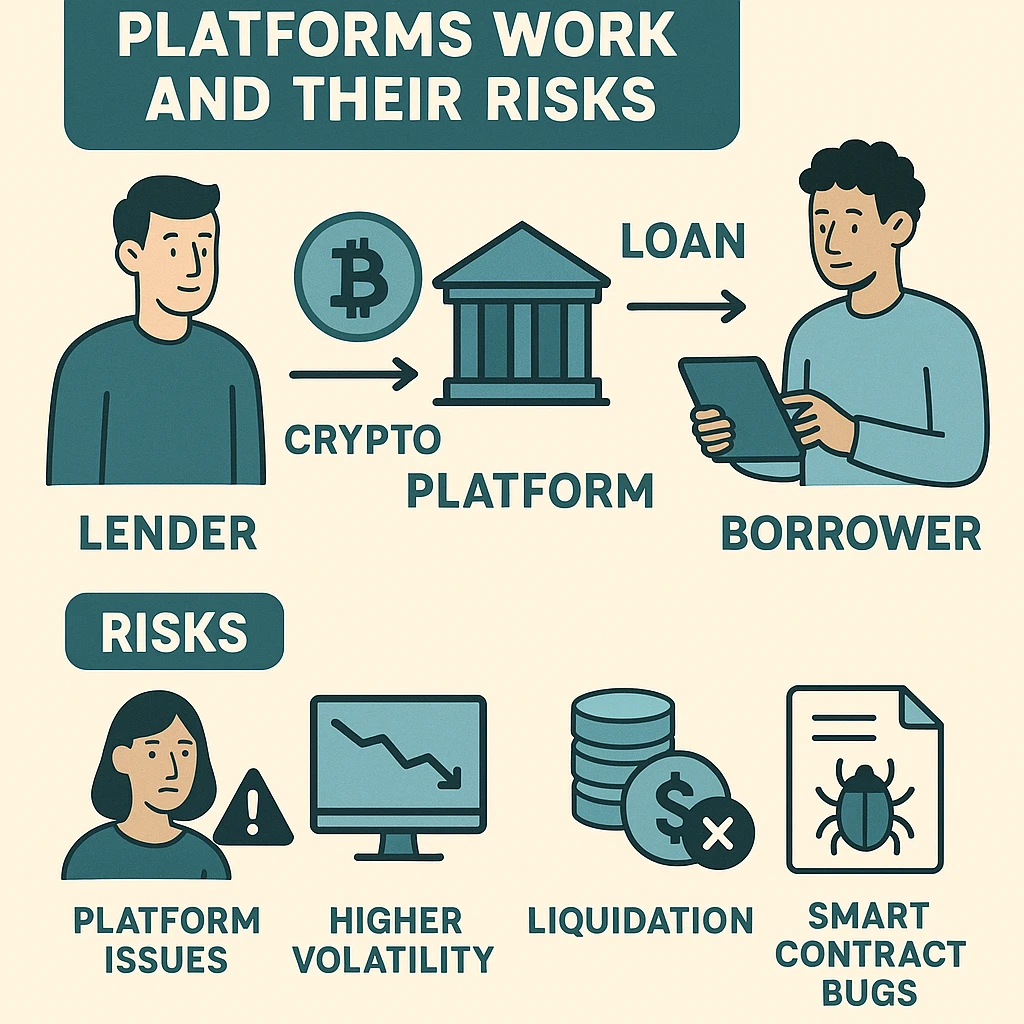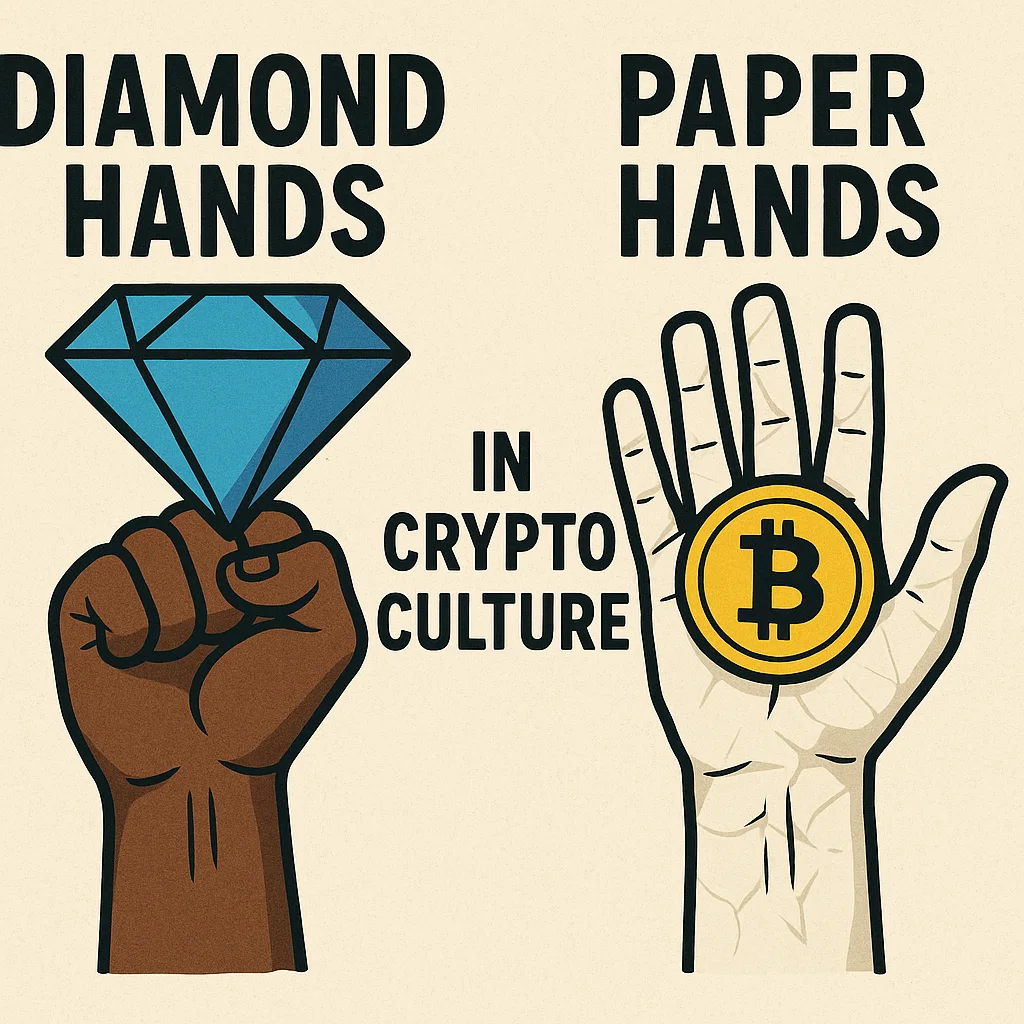Over the past ten years, blockchain technology and cryptocurrencies have steadily advanced. However, slow transaction times, user experience problems, and infrastructure constraints continue to make mass adoption difficult despite the growing international interest. Fifth-generation mobile network technology, or 5G, comes into play here.
5G promises a higher density of device connections, low latency, and extremely fast internet speeds. These benefits have the potential to spur the expansion of blockchain-based innovations across industries, DeFi applications, and crypto ecosystems. In this blog, we examine how 5G technology has the potential to significantly increase cryptocurrency adoption and revolutionize digital interactions, investing, and transactions.
What Is 5G and Why Does It Matter?
5G is the next evolution in mobile networking technology following 4G LTE. It offers a significant leap forward in terms of:
-
Speed: Up to 100 times faster than 4G.
-
Latency: Drastically reduced to 1 millisecond or less.
-
Bandwidth: Can support up to 1 million devices per square kilometer.
-
Reliability: More stable and resilient connections, even in crowded areas.
These advancements have far-reaching effects, not only for quicker gaming or streaming of videos, but also for the development of new technologies like the Internet of Things (IoT), smart cities, driverless cars, and—most importantly—cryptocurrencies.
Why Cryptocurrency Adoption Needs a Boost
While crypto has seen growing retail and institutional interest, several hurdles still impede widespread adoption:
-
Complex User Experience: For non-technical users, platforms, private keys, and wallets can be confusing.
-
Network Congestion: Prominent blockchains with scalability issues include Ethereum and Bitcoin.
-
Transaction Speed: Users used to instant payments may become discouraged by slow confirmations.
-
Limited Accessibility: Crypto use is practically impossible in places with inadequate mobile or internet infrastructure.
-
High Fees: Particularly during network congestion.
These challenges have created a gap between potential and actual adoption. Enter 5G.
How 5G Can Accelerate Crypto Adoption
1. Real-Time Transactions and Micro-Payments
With 5G’s ultra-low latency, transactions can be processed almost instantaneously. This capability enables:
-
Real-time crypto payments at point-of-sale locations.
-
Frictionless micro-transactions, ideal for content creators, gamers, and app developers.
-
Fast blockchain confirmations in high-throughput applications like DeFi or NFTs.
As 5G reduces delays in transaction propagation and verification, the entire user experience becomes more seamless.
2. Enhanced Mobile Wallet Experiences
The use of mobile wallets is essential for cryptocurrency, particularly in developing nations where mobile devices serve as the main means of internet access. 5G improves the speed, security, and interactivity of mobile wallets by:
-
Enabling smooth user interfaces.
-
Reducing load times for decentralized applications (dApps).
-
Supporting biometric security integration with minimal latency.
This will empower a new generation of mobile-first crypto users and foster adoption among the unbanked.
3. Enabling the Internet of Value
We are moving toward the Internet of Value, where devices can automatically exchange digital assets, as 5G makes it possible for the Internet of Things (IoT), which connects things like wearables, cars, and appliances.
For example:
-
A smart fridge could detect it’s low on milk, order it, and pay via a stablecoin.
-
An autonomous vehicle could pay tolls or refuel using crypto without human intervention.
Such use cases are only feasible with 5G’s low latency and high reliability, making crypto a vital layer in this machine-to-machine economy.
4. Decentralized Finance (DeFi) on the Go
DeFi provides banking services without middlemen, including lending, borrowing, and trading. However, many DeFi platforms are slow on mobile networks and web-based. These obstacles are eliminated by 5G by allowing:
-
Instant DeFi transactions.
-
Live updates to portfolio performance.
-
Seamless dApp integration on mobile.
As more users gain access to stable and high-speed mobile internet, mobile DeFi usage could rival desktop interactions, bringing DeFi to mainstream audiences.
5. Boosting Blockchain Gaming and Play-to-Earn
Play-to-Earn (P2E) models and crypto-powered gaming rely on responsive environments and dependable connectivity. 5G is compatible with:
-
Real-time multiplayer experiences.
-
In-game asset ownership through NFTs.
-
Instant payment processing for rewards and purchases.
Games like Axie Infinity and The Sandbox could evolve into truly immersive metaverse experiences with 5G infrastructure, attracting millions more players globally.
6. Securing Crypto Through Edge Computing
Another crucial issue with crypto is security. Instead of depending entirely on centralized cloud servers, edge computing—which is made possible by 5G—processes data closer to the source, such as a local node or mobile device. This is able to:
-
Reduce attack vectors.
-
Improve data privacy.
-
Speed up encryption processes.
For crypto transactions, edge computing minimizes risks associated with centralized exchanges and wallets—giving users more control over their assets.
7. Better Access in Remote and Developing Regions
Connecting places with poor internet access, particularly in rural or underserved areas, is one of 5G's greatest benefits. This contributes to the introduction of crypto to:
-
The unbanked: People without access to traditional financial institutions.
-
Emerging economies: Where crypto serves as a hedge against inflation or unstable local currencies.
-
Remote workers and digital nomads: Who rely on flexible, borderless finance.
With 5G, these users can tap into the global financial system through crypto—often using just a smartphone.
Challenges and Considerations
Despite the enormous potential, a few challenges remain:
1. 5G Infrastructure Costs
5G infrastructure deployment requires a large financial investment. The rollout of 5G is uneven, and many countries still lack complete 4G coverage. Only developed regions may initially benefit from this, potentially creating a digital divide.
2. Device Compatibility
New hardware is needed for 5G. The majority of users will require smartphones with 5G capabilities, which some people may not be able to afford, particularly in developing countries.
3. Regulatory Hurdles
5G and cryptocurrency are both subject to regulatory scrutiny. Governments that are worried about monetary policy, data privacy, and national security may put restrictions in place that prevent broad adoption.
4. Scalability of Blockchain Networks
Blockchain protocols themselves need to scale to meet growing demand, even with fast internet. Although there are still obstacles to overcome, Layer 2 solutions, sharding, and quicker consensus algorithms (such as Solana or Avalanche) are positive steps.
Use Cases That Show 5G + Crypto in Action
- Helium Network (IoT Mining)
Helium is a blockchain-powered decentralized wireless network. By giving IoT devices low-power internet access, it lets users mine cryptocurrency. It serves as an example of how blockchain technology and wireless infrastructure can complement one another.
- Audius (Music Streaming)
On the blockchain-powered music platform Audius, musicians can get paid directly by fans. These platforms could offer instantaneous royalty payments, NFTs for ownership, and high-quality streaming worldwide with 5G.
- Chainlink (Oracles)
Chainlink gives smart contracts access to off-chain data. Oracles can retrieve data from thousands of IoT sensors with 5G, allowing smart contracts to react instantly.
The Road Ahead: 5G and Crypto Converge
As 5G rolls out more broadly and crypto continues maturing, we’ll see growing convergence between the two. This evolution will:
-
Expand decentralized finance (DeFi) to mobile-first users.
-
Make P2E gaming and digital assets more accessible.
-
Allow machine-to-machine payments in real-time IoT applications.
-
Accelerate cross-border payments and remittances.
To put it briefly, 5G serves as the glue that enables the seamless and efficient use of cryptocurrencies in our increasingly digitalized society.
Final Thoughts
Enhancing the infrastructure supporting cryptocurrencies is essential to their widespread adoption. 5G is a game-changer for the whole digital ecosystem that blockchain and cryptocurrencies are creating, not just for mobile communications.
From lowering transaction latency to allowing token exchanges between smart devices, 5G may open up previously unthinkable crypto use cases. It's about making the financial world smarter, more connected, and decentralized, not just about speed.
Governments, investors, and startups that understand this synergy will be in the best position to benefit from the upcoming innovation wave. Anticipate cryptocurrencies to become even more popular as 5G networks proliferate because they are faster, safer, and more potent than before.





Leave a Reply